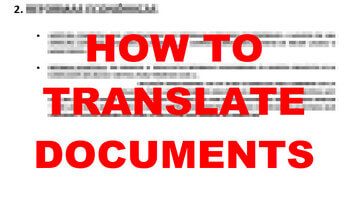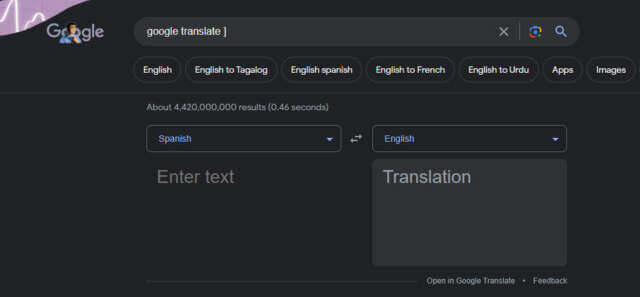I love that we live in a world of diverse cultures and rich languages, but we don’t always understand what we’re reading. For my part, whilst I speak fluent Spanish and can read and write in that language, sometimes I need more than a little help. I’m reminded of this fact by coming across Dick Evans’ excellent article from March 2021 How To Translate Foreign Language PDF To DOC where he used both the Microsoft Word built-in translator and Google Translate. In the short time since Dick’s article was published, technology has moved in in strides, unsurprisingly. Up until recently, I’ve been using Google Translate, then I came across DeepL and from Dick’s article, learned that Microsoft Word also has a translate feature.
Office 365 Translate To English
For example, I’m translating the incoming Argentine government plan which was sent to me as a .pdf file and whilst I understand most of it, there are some words that I would need to translate. Instead of pausing to consult a dictionary, it’s a lot quicker to translate the entire document, so first I went to Word in Office 365 which I subscribe to. Then I opened the .pdf, saved it as a .docx, hit Preview, and then Translate.
The end result was an English version which I then saved as a .docx and the translation was better than expected with the entire process completed in just a few seconds.
DeepL Translate
I’ve been using DeepL for quite some time and find it useful for grabbing text from a media article, translating it, and then posting it into my expats’ forum for those who don’t speak Spanish. The free version has a limit of 500,000 characters (about 1500 words) per month and can also translate entire documents, so I uploaded the .pdf and within about 30 seconds the document was translated into English, even though it contains 2860 words.
The finished translation was almost identical to Office 365 and I spotted no obvious errors.
Google Translate
This works in a similar way to DeepL where you simply copy and paste the text into the auto-detect language box and then select the language you need to be translated into. I believe the limit is 1500 words per translation.
Again, I uploaded the .pdf file and Google Translate churned out a downloadable translated file in about 30 seconds.
The downloaded document is a .pdf file which you can open in a browser and whilst not as good as DeepL or Word, it serves as another useful resource.
With machine learning improving as time marches on, translating documents has never been easier and whilst I would never trust a machine to translate one of my novels for the obvious reasons of nuance and writing style, it’s a huge leap forward.
—






Was it a typo about limit being 500,000 characters or about 1500 words? In typing we were taught that a ‘word’ was considered 5 characters, implying the limit would be 100,000 words. Conversely, assuming 1500 words was correct would imply a word is 500,000/1500 = 333.33 characters per word. You make the call:).
As a long-time subscriber, I always enjoy your and others’ articles in DCT.
Bob